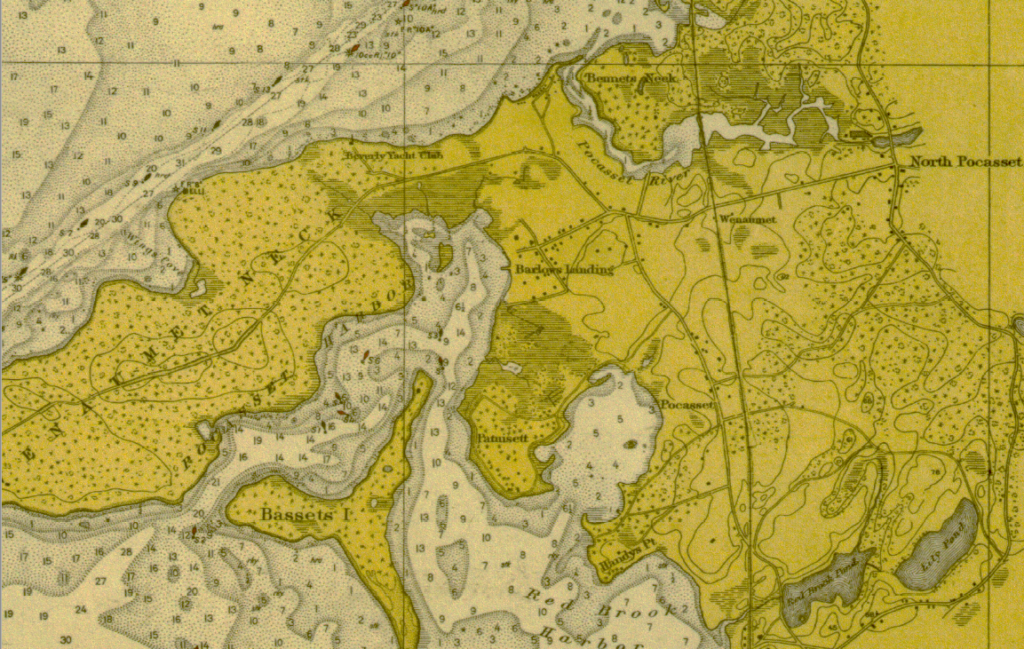Where Has All the Marshland Gone?
This 1917 Mass Department of Commerce map shows the natural flow of water between Barlow’s Landing Harbor and Hen Cove. These marshes and waterways enabled plant and marine life in Barlow’s Landing, Wing’s Neck inlet and Hen Cove to thrive for millennia.

Before the 1880s, water flowed freely between the two bays. In the mid-1880s, the Town constructed a dirt road and a wooden bridge to span the channels. This structure was replaced with a concrete bridge in the 1920s. The 1934 aerial photo below shows the bridge with the water flowing freely into Hen Cove at Crab Island. The 1938 hurricane destroyed the bridge. The Town then installed two large concrete pipes under Circuit Ave to handle the flow of water.

In 1960, Crab Island and the surrounding mudflats were dredged to create an anchorage for larger boats at the head of Hen Cove along with a large public beach. The massive dredging and relocation of mud and sand filled in the existing marshland and ended the water flow between Barlow’s Landing Harbor and Hen Cove. It did not stop there. Since 1960, the channel into Hen Cove has been dredged three, four, or more times. In 2015, dredging encompassed areas just off the Public Beach and on the south side of the cove toward Bell Buoy Road. This dredging removed the small 50-foot island near the rocks on that side of the bay. The result of these decades of dredging can be seen in this recent aerial photograph.

What Can We Do Now?
The 1960 decision to dredge Hen Cove and fill in the wetlands was shortsighted. In the absence of any apparent consequences, this misguided practice continued for more than 50 years. The legacy is high counts of coliform bacteria in Barlow’s Landing Harbor, Hen Cove, and Wing’s Neck inlet. Old cesspools and the increasing use of toxic fertilizers on nearby lawns have exacerbated the problem.
For generations, people have been coming to Pocasset to enjoy its unique relationship with the surrounding water. We must not let the water quality continue to deteriorate. It is time to say enough is enough. We need to act now to reverse this trend.